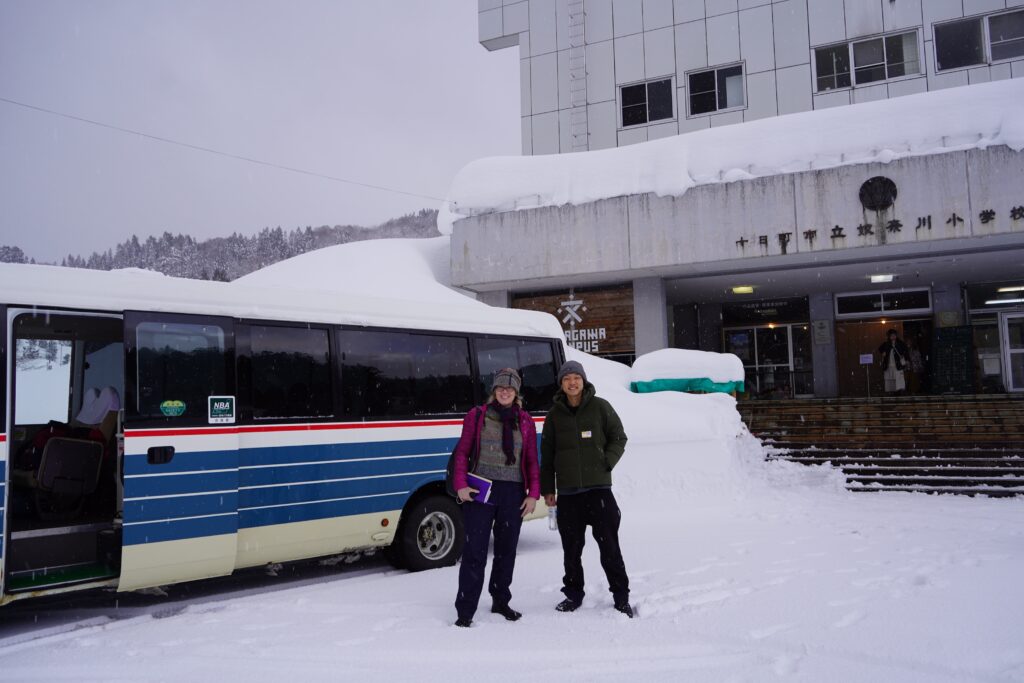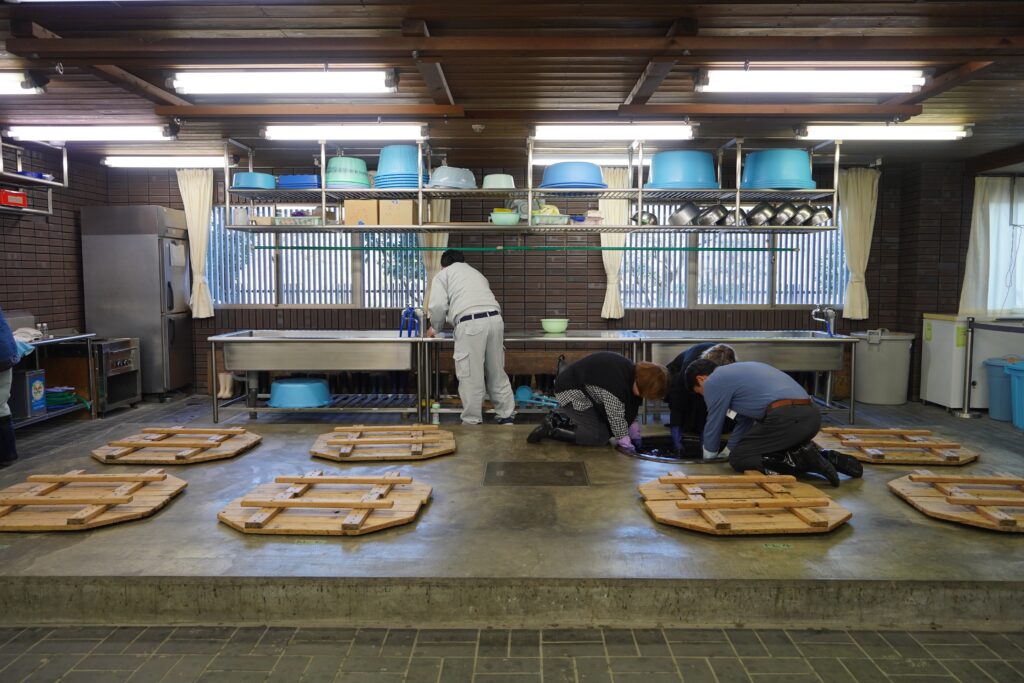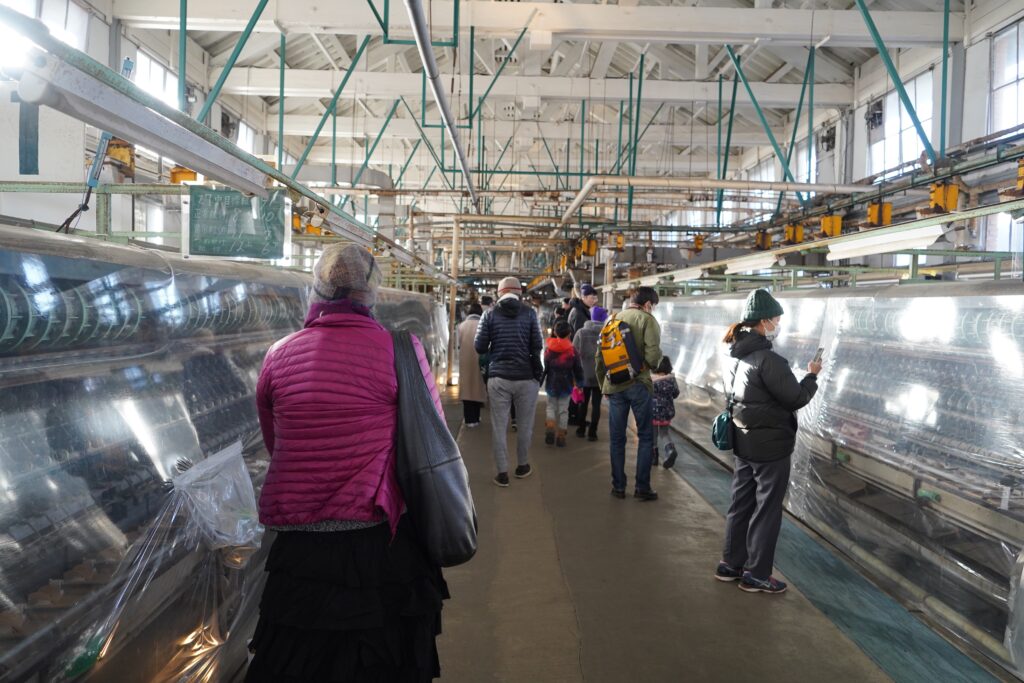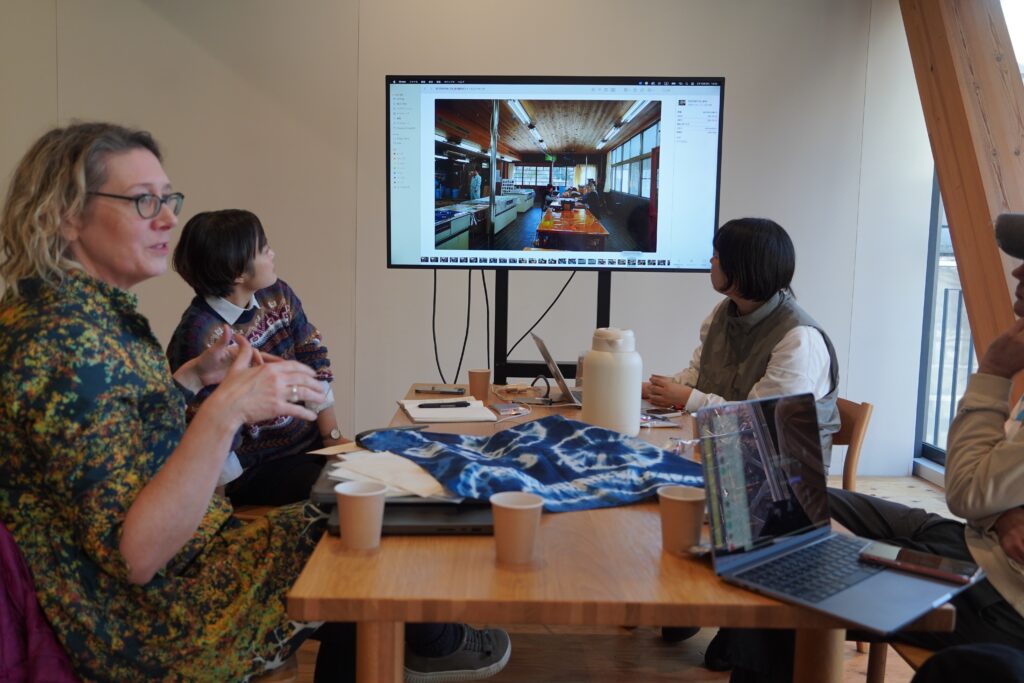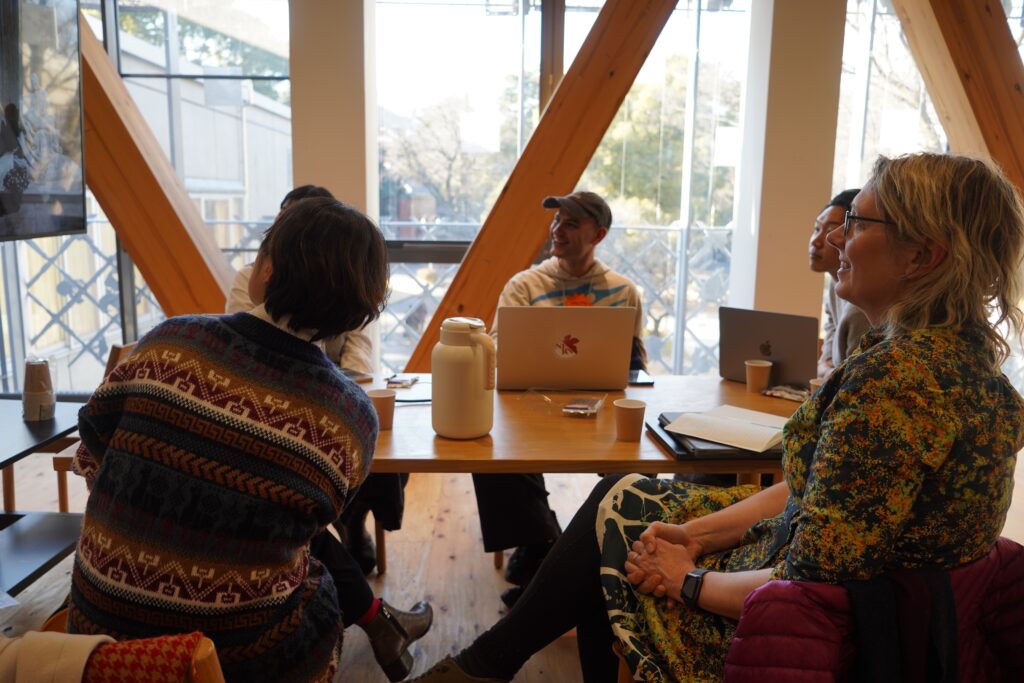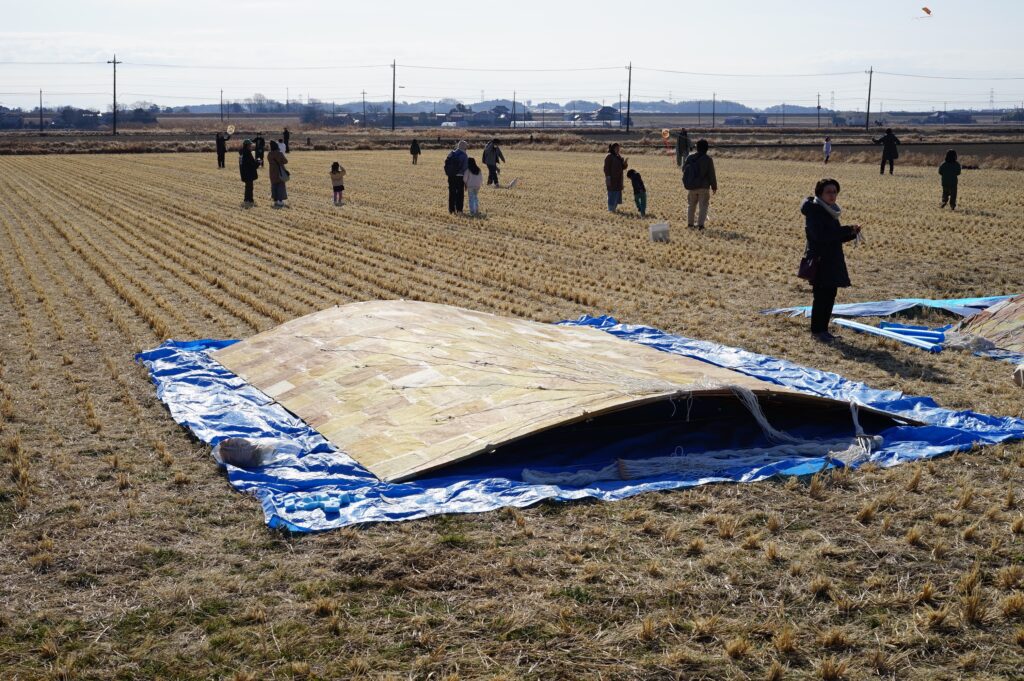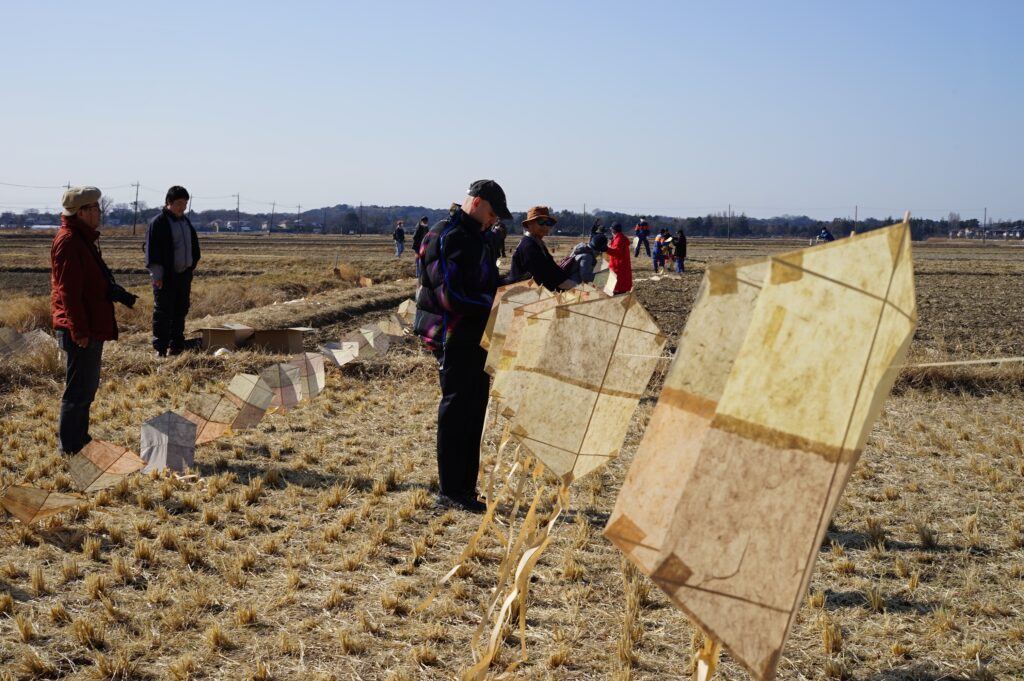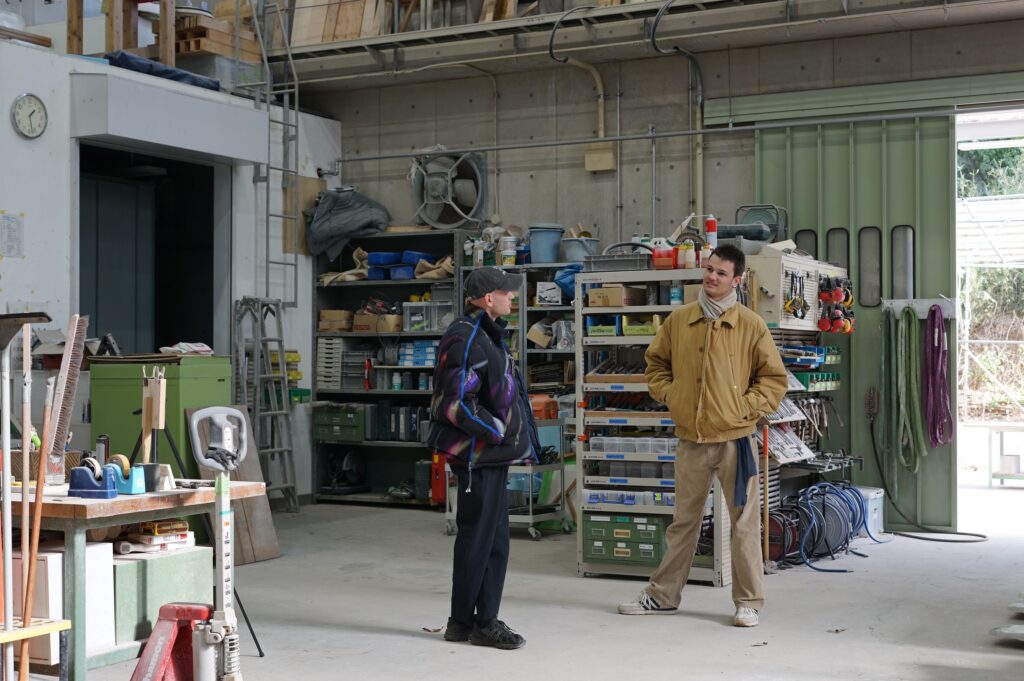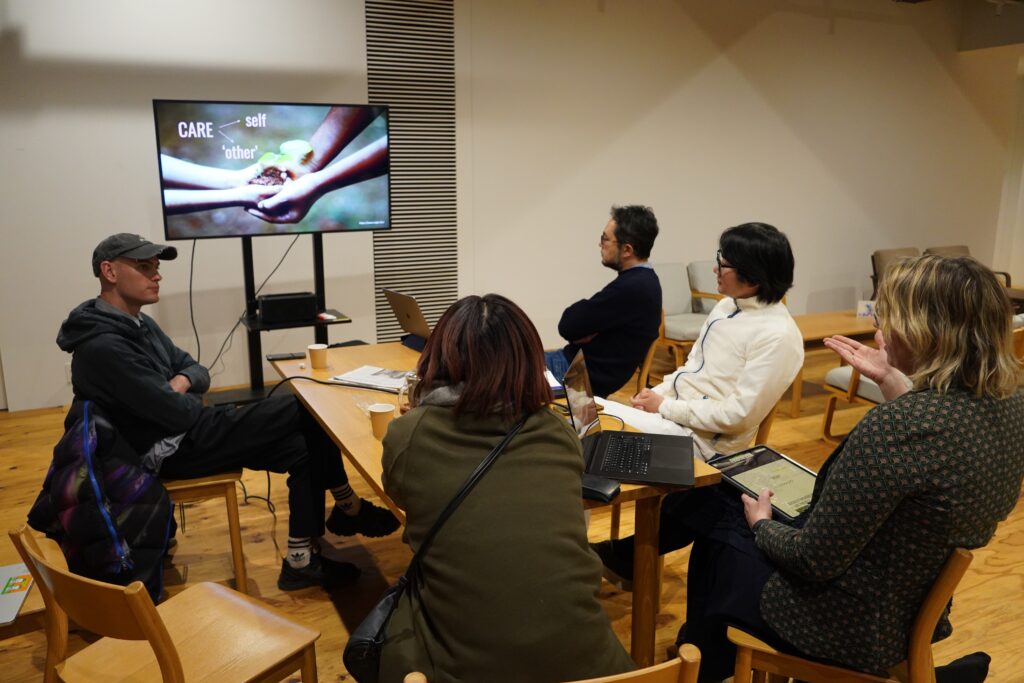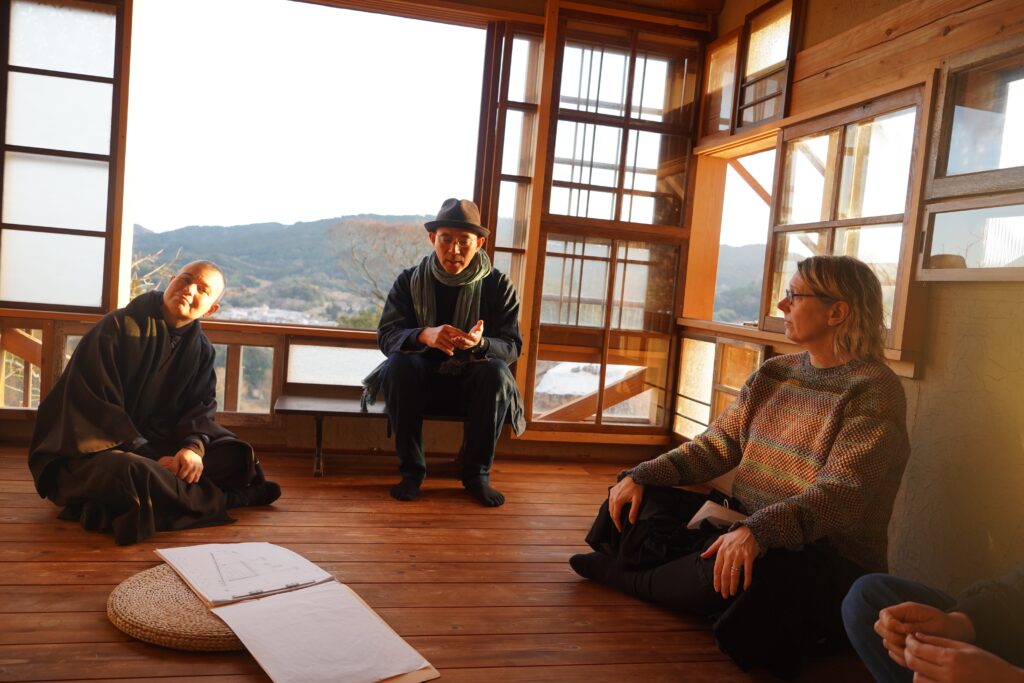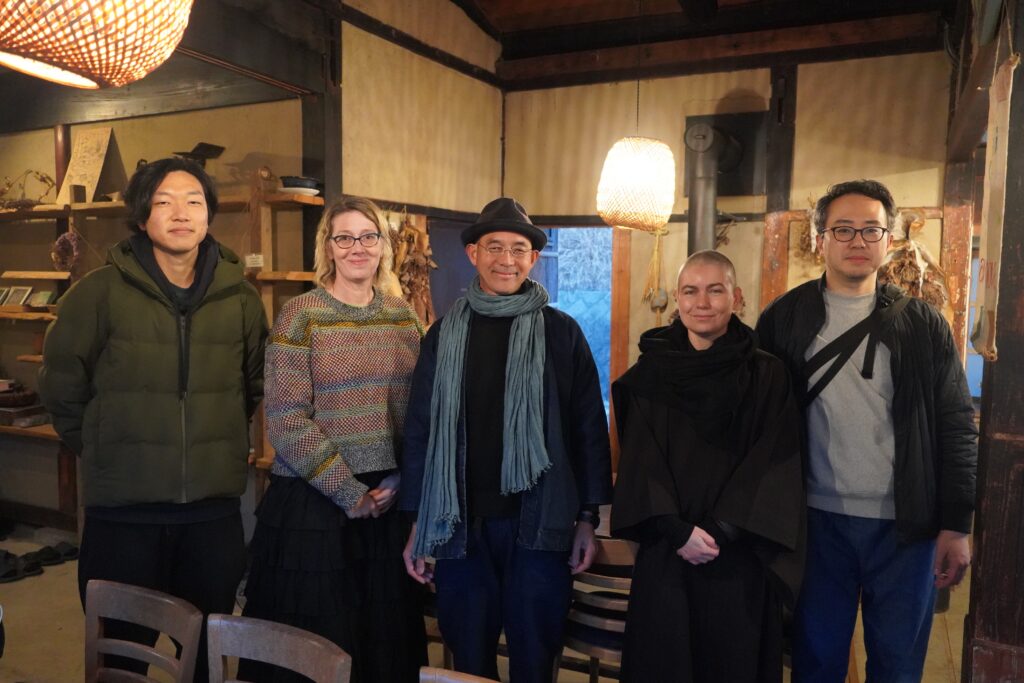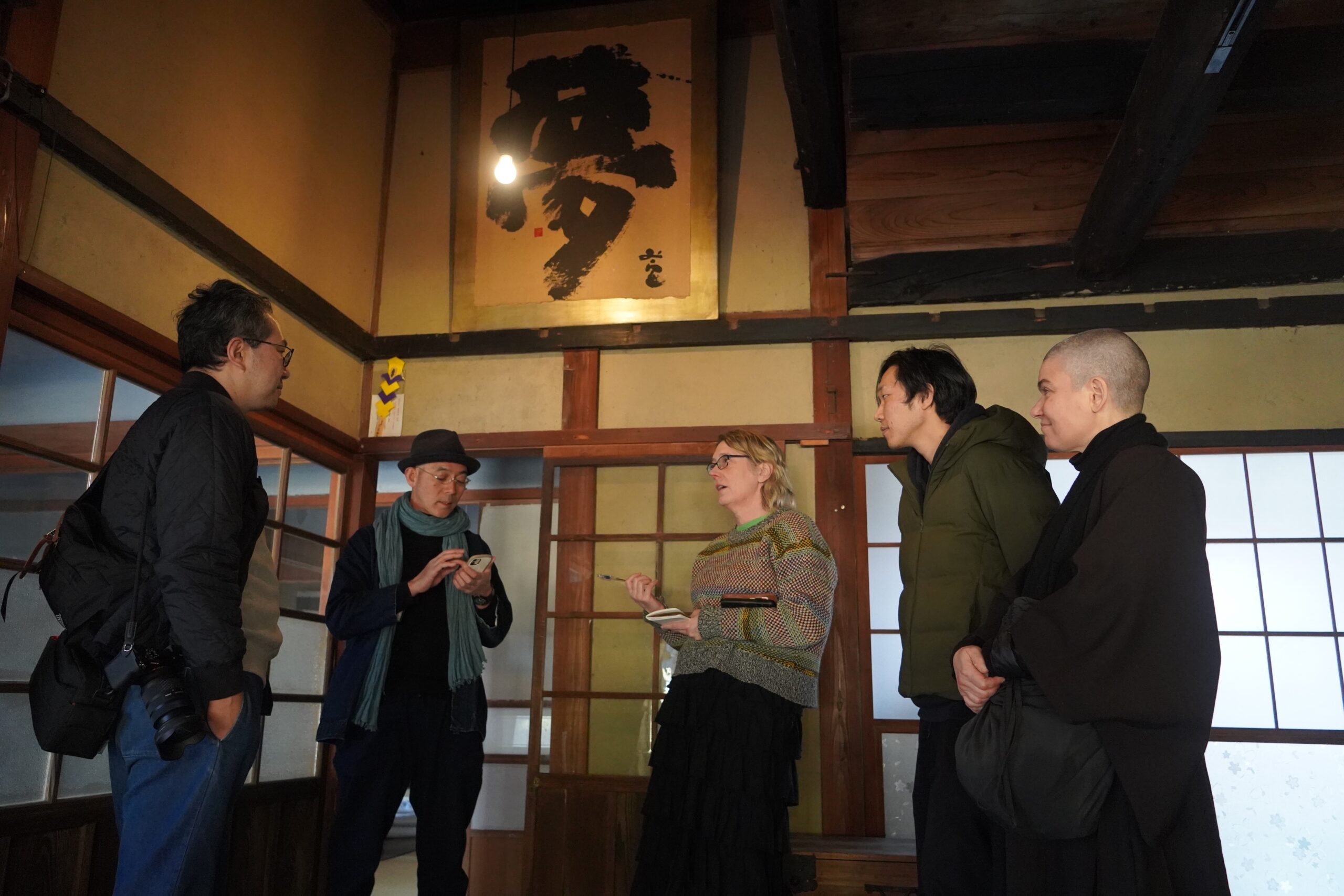DATE
2025/1/17 – 2/13 (Internship + Field Research Phase)
LOCATIONS
Tokyo University of the Arts (Ueno, Toride Campuses)
Chiba, Hiroshima, Niigata, Gunma
FACULTY MEMBERS
Kenichiro Egami (Project Assistant Professor, Global Support Center, TUA)
Mei Miyauchi (Project Research Assistant, Global Support Center, TUA)
Koji Kato (Staff, Global Support Center, TUA)
Naoto John Tanaka (Research Assistant, Department of Arts Studies and Curatorial Practices, The Graduate School of Global Arts, TUA)
STUDENTS
Callum McGrath (PhD in Fine Art, Monash University)
Angela McIntosh (PhD, University of the Arts London)
RESEARCH SUPPORT
Motoki Watanabe (Global Art Practive, Tokyo University of the Arts)
Georgia Sagri (Artist)
Megumi Harada (Tokyo Research, documentation)
Sachiko Tomohisa (Hiroshima Research)
Satsuki Miyauchi(Gunma Research)
RESEARCH VISIT
Small Earth (Chiba)
Echigo-Tsumari in Winter 2025 (Niigata)
Takasaki Dye Plant Garden, Tomioka Silk Mill (Gunma)
Hiroshima Peace Memorial Park, Motomachi Public Apartment Complex (Hiroshima)
Over the course of about one month, two PhD students from Monash University and the University of the Arts London were invited to Japan for a research residency program. During their stay, they focused on deepening their understanding of local communities and cultural practices in Japan through field-based research aligned with their individual research themes.
Callum McGrath, whose doctoral research centers on the relationship between queer identity, community, politics, and media, explored how memory and political narratives are represented within urban and public spaces. His fieldwork in Hiroshima included visits to the Peace Memorial Park and Peace Memorial Museum, where he examined how wartime memories are preserved and integrated into the city’s landscape. He also visited the Motomachi Apartments, a postwar reconstruction landmark, to consider the social and political dimensions of urban renewal and collective remembrance.
Angela McIntosh focused on the intersections between art, community, nature, and craft. Her research took her to several regions including Chiba, Niigata, and Gunma. In the terraced rice fields of Kamogawa City (Chiba), she studied how agricultural work fosters relationships between rural and urban communities. In Echigo-Tsumari (Niigata), she observed artistic and communal practices led by local women living in snowy mountain regions, exploring how art functions as a form of social engagement within rural life. She also conducted research at the Gunma Prefectural Dye Plant Garden, investigating traditional indigo dyeing and the cultivation of dye plants, examining the interconnections between people, nature, technology, and culture.
Rather than following a predetermined plan, both researchers developed their projects organically, responding to the encounters and experiences that unfolded during their stay. Through these interactions with local communities and environments, they were able to situate their inquiries within Japan’s cultural and social contexts and gain new perspectives on their respective themes.
This residency emphasized process over product, valuing exploration and immersion as integral to the research itself. By foregrounding lived experience and field-based discovery, the program offered meaningful insights into how international artistic research can evolve through cross-cultural dialogue and contextual engagement.
